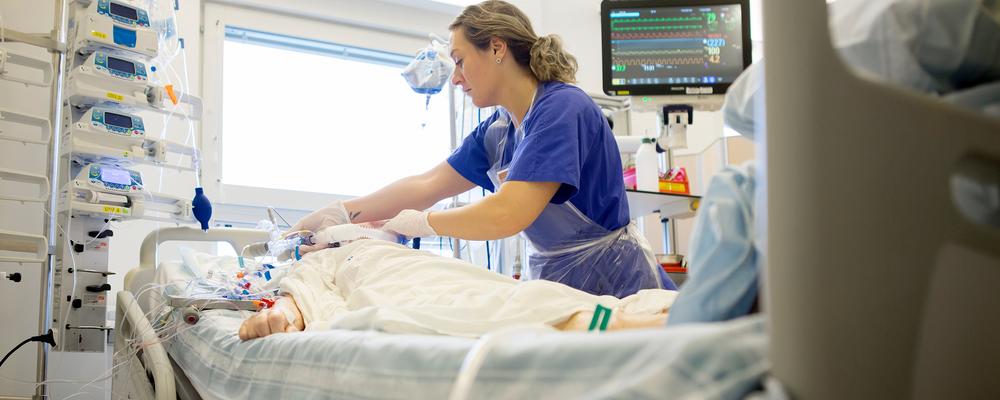”This is clinical research at its best”, says Helena Odenstedt Hergès, chief physician at Sahlgrenska University Hospital and adjunct university lecturer at Sahlgrenska Academy.
In an anesthetized patient, for example, the heart can signal that something is not right in the brain. These are subtle changes in signals, and they are difficult to detect. Now researchers want to find out if AI can be used to track and possibly help prevent an upcoming stroke in anesthetized patients. The method could be developed into a warning system that sets off an alarm when patients under anesthesia develop a lack of oxygen in the brain with a stroke as a result. These may be critically ill patients in intensive care, anesthetized patients and patients who have already developed stroke, but also other patient groups.
”Can threatening oxygen deficiency in the brain be detected based on other physiological signals, by analyzing large amounts of data through AI? The research aims to detect and possibly prevent oxygen deficiency in the brain of, among others, anesthetized patients. A doctor can’t analyze all the data registered from a patient, but it is for AI can”, says Helena Odenstedt Hergès.
Researchers in the Software Engineering division at the Department of Computer Science and Engineering will work to develop a prediction model that can warn doctors when patterns occur that may be signs of oxygen deficiency in the brain that could develop into stroke. They will mainly use supervised learning and develop a chain of algorithms where the reliability of the results increases with each step.
”For me, the project is important to gain a better understanding of the challenges of developing AI-based software in healthcare. By being in a hospital environment, and observing clinical work, I can study how to secure data and algorithm quality in healthcare software, says Miroslaw Staron, professor in the Software Engineering division.
The formulated research project that starts this autumn is a collaborative project, dependent on several competencies, clinically active doctors and researchers in technology and software development. Among others Professor Miroslaw Staron, Department of Computer Science and Engineering, University of Gothenburg/ Chalmers University of Technology, Professor Silvana Naredi, Professor Mikael Elam, Med Dr Linda Block, Med Dr Jaquette Liljenkrantz, Leg doctor Ali El Merhi, Leg doctor Richard Vithal, Sahlgrenska University Hospital/ Sahlgrenska Academy.
The project is partly funded by CHAIR - Chalmers AI Research Center
Miroslaw Staron, Professor, Department of Software Engineering
Email: Miroslaw Staron
Phone: +46 (0)31-7721081
or Sahlgrenska University Hospital press service: +46 (0)31-3429600 Email: massmedia.su@vgregion.se
